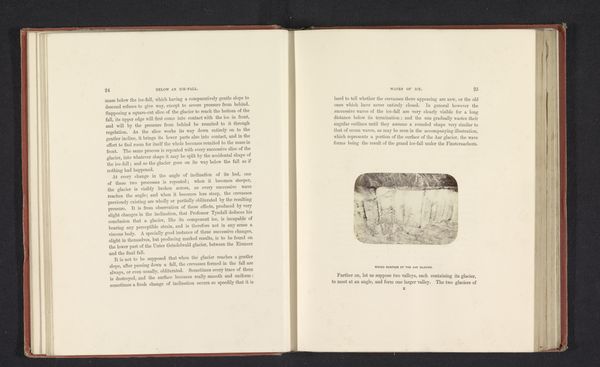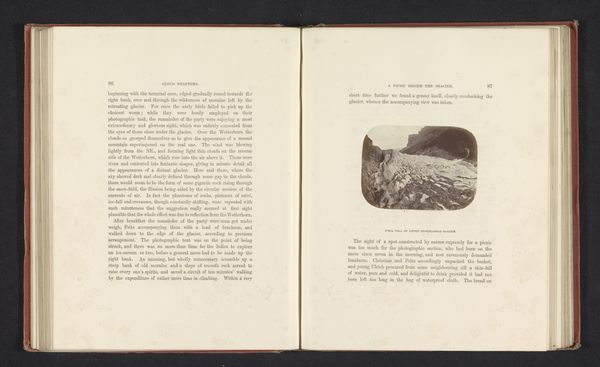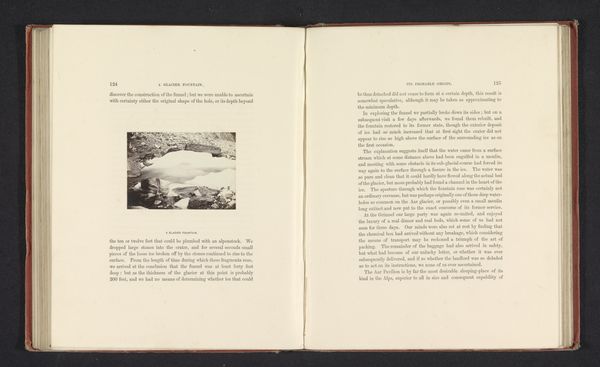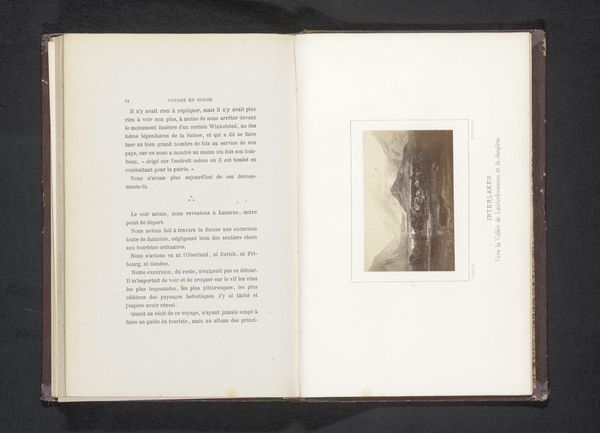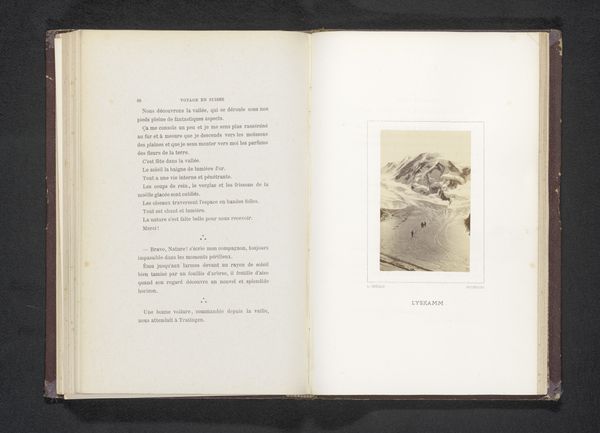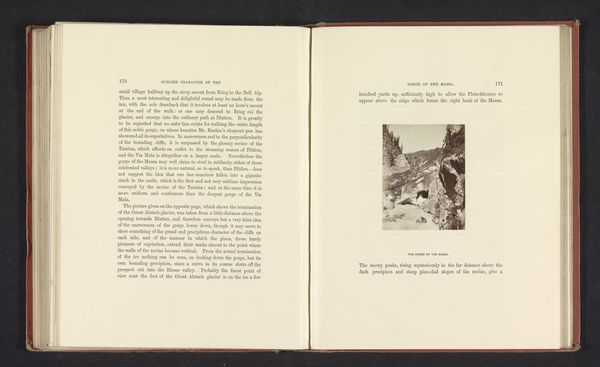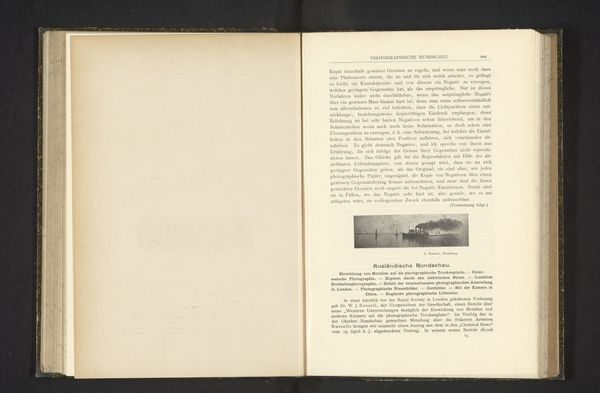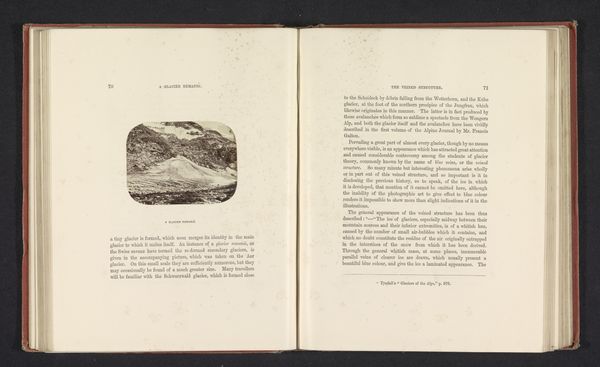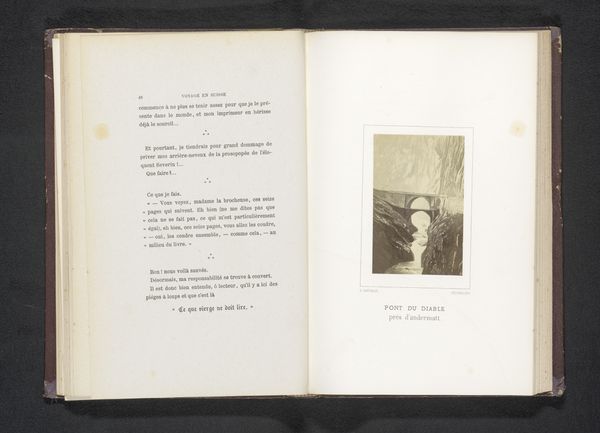
print, photography
# print
#
landscape
#
photography
#
academic-art
#
realism
Dimensions: height 69 mm, width 92 mm
Copyright: Rijks Museum: Open Domain
Curator: Before us is "Terminal cave of the Unter Grindelwald glacier," a photograph by Ernest Edwards, captured before 1866. What's your initial impression? Editor: An overwhelming feeling of coldness and isolation. The muted grayscale palette enhances the sense of being in a remote, almost hostile, environment. The small figure accentuates the scale of the cave, adding to the impact. Curator: Indeed, Edwards masterfully uses tonal gradation to establish depth and form. Notice how the rough textures of the glacial ice contrast sharply with the figure. This interplay of textures, juxtaposed with light and shadow, guides the eye through the composition. Editor: Placing the photograph within its historical context reveals a fascination with exploration. The depiction of glaciers reflects 19th-century scientific expeditions that transformed understandings of our planet. Was the image presented alone or with others? Curator: The photograph resides within a bound volume featuring scientific exploration of glacial landforms, thus merging scientific record and aesthetic landscape, a true academic sensibility that tempers an otherwise realistic work. Its presentation shapes our viewing as a document alongside accompanying scientific texts, and even imbues the imagery with added gravity. Editor: I think you've rightly illuminated this work as not merely an aesthetic pursuit. In addition to its formal beauty, it also functioned as a mode of visualizing the sublimity of nature, in the face of scientific discovery and societal expansion. Curator: By using the sharp contrast to create forms with photographic techniques that feel relatively early and unrefined in the scope of art, it also demonstrates photography’s usefulness. But also the limitations of an objective observation— the work offers beauty while simultaneously conveying the fragility and temporality of such majestic geological structures, glaciers being one the more affected victims of current conditions. Editor: A poignant reminder that visual art can subtly record cultural obsessions even within what would be considered objective scientific documentation. Curator: Agreed. Edwards gives us much more than just a frozen cave, a historical capture of visual storytelling in our ever changing environment.
Comments
No comments
Be the first to comment and join the conversation on the ultimate creative platform.
